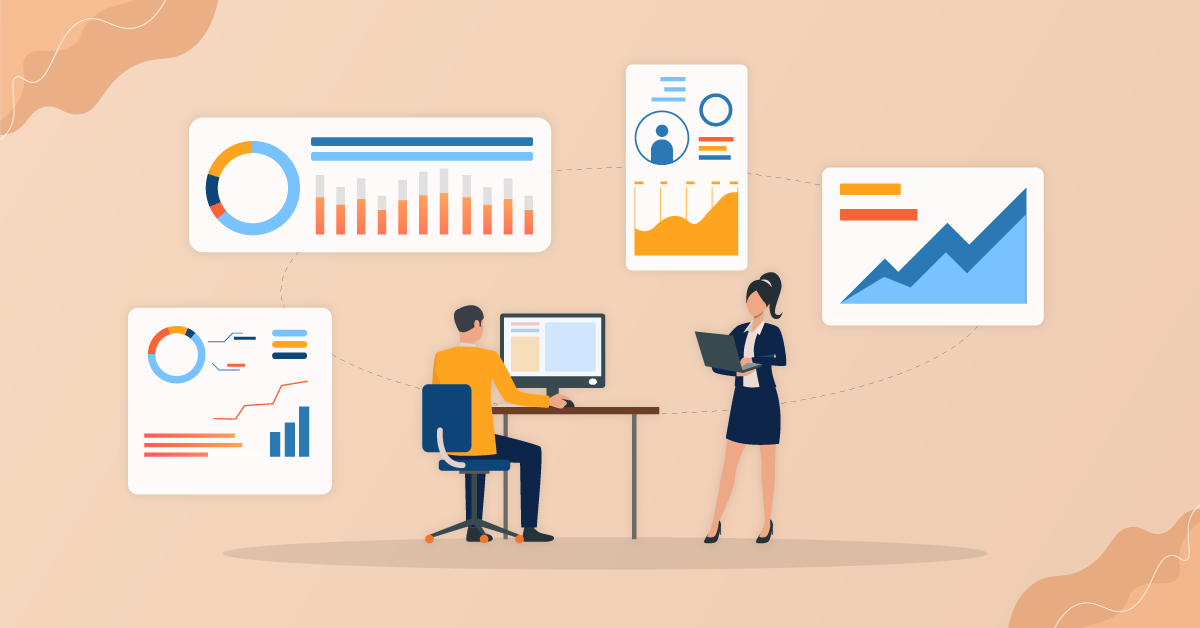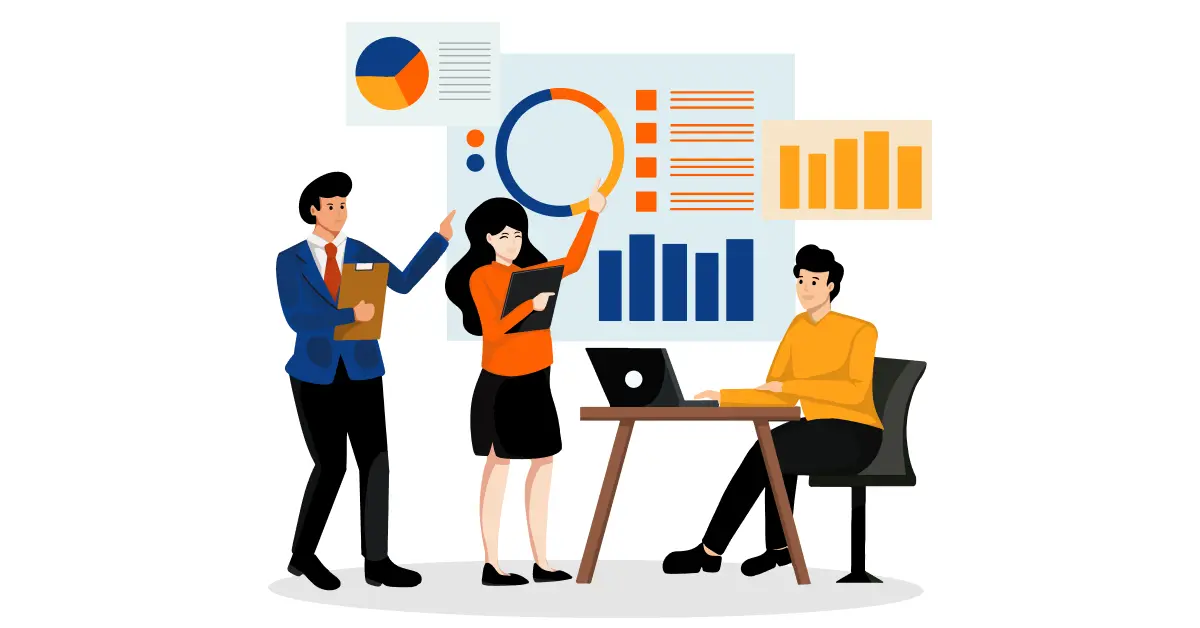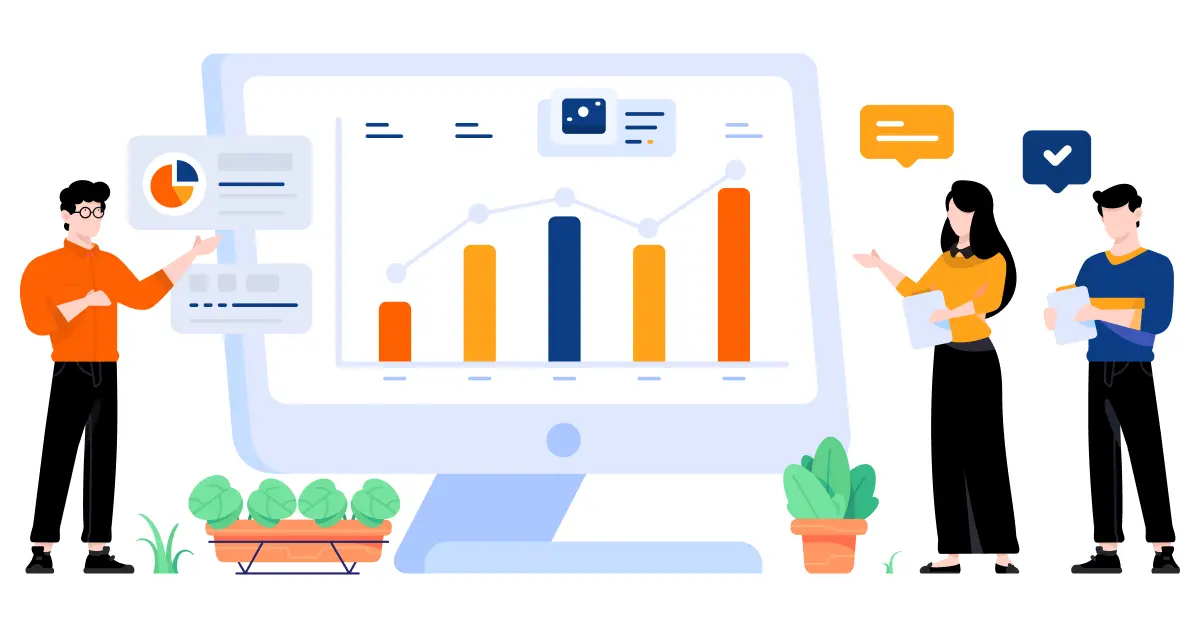
Workforce Analytics is the new master in the current world. In any section, data and data analysis are considered supreme. The reason is that it helps find critical workforce management solutions and simplifies the information.
Data helps in understanding complex details and makes them easy to comprehend. The process of interpreting or communicating the data is called analytics. Analytics are critical in businesses.
As the company grows and increases its workforce, workforce data analytics is essential to keep track of the growth. With the help of strategic workforce planning, leaders can identify the specific details and work on areas for improvement.
Knowledge of workforce data analytics will help you understand business insights and make informed decisions. Companies use these methods to improve employee experience, operational efficiency, technology, etc.
The data-driven approach encourages better business performance as no area remains hidden, and the outcome constantly improves.
Workforce solutions help you discover what’s happening in your workforce, including how employees spend their time, who is at risk of burnout, and other performance data.
Managers can use this data to predict business outcomes and make changes that will help the team improve productivity in the workplace. Workforce analytics can be applied on several levels.
It allows the companies to monitor trends at the individual, team, department, and organizational levels. The information received is ultimately used to save the company costs.
Table of contents
Defining Workforce Analytics
Workforce analytics can be defined as the process of gathering workforce-related data from both internal and external sources. The collected data is then analyzed, and later, the findings are converted into actionable information.
Workforce metrics and analytics use data and statistics to understand employee-related data and productivity. Unlike people analytics, workforce analytics takes a larger view of work as a whole rather than focusing on individuals.
Workforce planning analytics aims to assist in measuring and potentially enhancing work performance. A human resources or relevant department frequently performs these evaluations because they are primarily concerned with labor analytics.
Today’s business world is more dynamic and competitive than ever, and with the growth of data and remote workforce management, previously impossible sorts of analysis have become practical for companies.
As a result, companies prefer to use resource planning softwares to meet their strategic goals and objectives.
How Does Workforce Analytics Work?
Workforce solutions comprise gathering information about the company’s workforce and how they do their tasks. Experts in workforce analytics can evaluate a workplace to determine which workforce solutions will produce the best outcomes for the company.
After collecting the data, these professionals evaluate it to see what facts they can learn about how the workplace works and how to improve it.
The reports state that the global workforce analytics market was worth $1.64 billion in 2018, and they expect it to reach $5.97 billion by 2026, expanding at a CAGR of 17.6% between 2019 and 2026.
Benefits of Workforce Analytics
Research shows that organizations that follow data-driven approaches are more effective than competitors that do not use data.
Therefore, it is essential to know the benefits of workforce analytics. Below are some points that will help you understand the benefits of workforce analytics.
1. Enhanced Productivity and Bonding
We often see that employees struggle with their performance. Workforce analytics can help companies get to the bottom of these issues and help employees with insight to establish a healthy collaboration.
With the help of employee monitoring software at their disposal, businesses can reorganize teams as needed and collaborate with employees to solve current challenges with their colleagues.
You could assume that employee monitoring tools are only for leaders or managers. However, it gives employees access to check their performance regularly.
Workforce analytics enables employees to avoid burnout, Improve productivity, and, most importantly, execute their best work. Overall, workplace analytics help the organization improve relationships across the company.
These employee monitoring tools can improve employee interactions on the same playing field and enhance relationships between executives and their HR directors.
2. Better Decision-Making
Workforce analytics helps in making better and more informed decisions. Employees tend to follow their instincts, a crucial element of decision-making.
However, leaders want to be completely confident before making any decision. Therefore, they prefer data-analyzed decisions. Workplace and data analytics can assist organizations in achieving the desired results.
Workforce analytics tools not only help the employees understand the problem but also help in finding the solution faster. Accurate time analysis helps leaders decide on the spot rather than waiting long for helpful information.
3. Cost Reduction
Companies constantly look for opportunities to cut down on unnecessary costs. Organizations can use Workforce analytics tools to identify which technology, marketing techniques, and other initiatives aren’t performing as well as they could.
Analyzing data helps companies minimize resources that are not necessary for success. With in-depth knowledge of workforce solutions, businesses can minimize unnecessary resources for success or help improve employee productivity.
4. Retention
HR executives may use labor analytics to retain employees, empower team leaders, and improve employee productivity. Using workforce analytics can also help HR managers establish a strong culture of trust and transparency where they recognize and value individual employee contributions.
5. Enhanced Data Security
Workforce analytics also help in keeping internal data safe. The cloud-based analytical system allows the companies to keep track of the sensitive data that can cause threats to the organization.
Conclusion
Workforce analytics can be described as a one-stop solution for all the problems. It helps in accurate time analysis of the issue. Employees can also use the analyzed data, which serves the organization’s overall growth.
The Workforce analytics platform provides multiple features that make the task easy. However, these platforms should prioritize trust and privacy to protect company-sensitive data and remain secure.
Leapmax is one solution that provides all such features and enables you to make data-driven decisions. Leapmax, a workforce analytics platform, allows managers and employees to check in on the pain areas and work on them accordingly.







